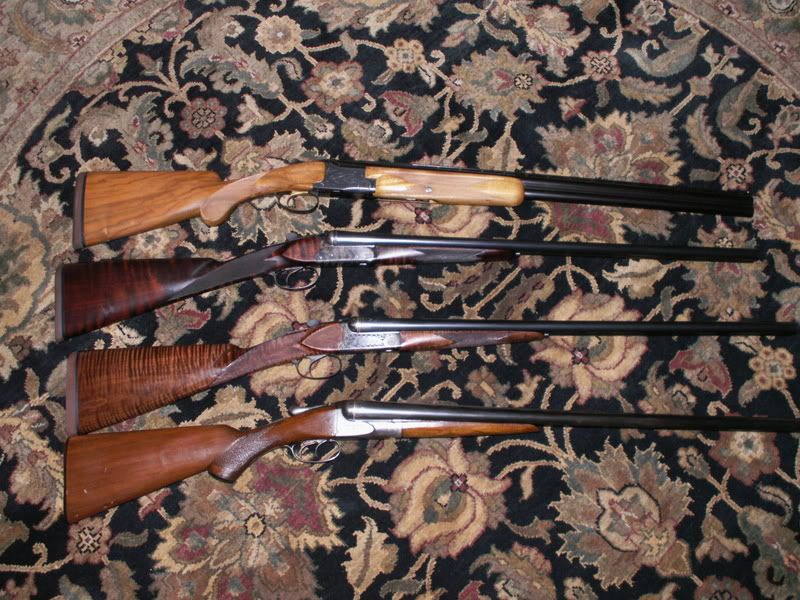Please Help Me Identify - 01/07/07 04:00 AM
Can anyone help me identify this old percussion double gun? I suspect it of German origin and circa 1850s and intended for big game hunting. From researching here, I also believe it is known as a "Buchsflinte." I have also seen such guns refered to as a "Zweiling." I have linked photos of my gun below.
I thought it unusual for the stock carving of what might best be described as a gothic looking bat-winged mammal (deer or perhaps boar). Also interesting is that it has a both a smooth bore (right) and deeply rifled bore (left). I will not attempt a guess at the caliber but both barrels appear to have the same caliber and are only somewhat smaller than a 12ga (a dime will not fit). The barrels also appear to be of wire twist construction (something I was not aware was done on rifle barrels).
All major parts are serial (or assembly) numbered 22. On the underside of the barrel there is a proof mark and the number 58 in an oval. The proof mark looks like a crown over two downward pointing crossed sabers.
The quality of manufacture appears to be fairly good (although this particular specimen has seen years of abuse and is now only suitable for wall decoration). However, belying the apparent care lavished in the manufacture of this weapon, I can find no indication of who manufactured this old double.
Gun:
http://i84.photobucket.com/albums/k36/dbadcraig/PICT0198.jpg
Bores:
http://i84.photobucket.com/albums/k36/dbadcraig/PICT0203.jpg
Proof Mark:
http://i84.photobucket.com/albums/k36/dbadcraig/PICT0200.jpg
Stock Carving:
http://i84.photobucket.com/albums/k36/dbadcraig/PICT0194.jpg
I thought it unusual for the stock carving of what might best be described as a gothic looking bat-winged mammal (deer or perhaps boar). Also interesting is that it has a both a smooth bore (right) and deeply rifled bore (left). I will not attempt a guess at the caliber but both barrels appear to have the same caliber and are only somewhat smaller than a 12ga (a dime will not fit). The barrels also appear to be of wire twist construction (something I was not aware was done on rifle barrels).
All major parts are serial (or assembly) numbered 22. On the underside of the barrel there is a proof mark and the number 58 in an oval. The proof mark looks like a crown over two downward pointing crossed sabers.
The quality of manufacture appears to be fairly good (although this particular specimen has seen years of abuse and is now only suitable for wall decoration). However, belying the apparent care lavished in the manufacture of this weapon, I can find no indication of who manufactured this old double.
Gun:
http://i84.photobucket.com/albums/k36/dbadcraig/PICT0198.jpg
Bores:
http://i84.photobucket.com/albums/k36/dbadcraig/PICT0203.jpg
Proof Mark:
http://i84.photobucket.com/albums/k36/dbadcraig/PICT0200.jpg
Stock Carving:
http://i84.photobucket.com/albums/k36/dbadcraig/PICT0194.jpg
